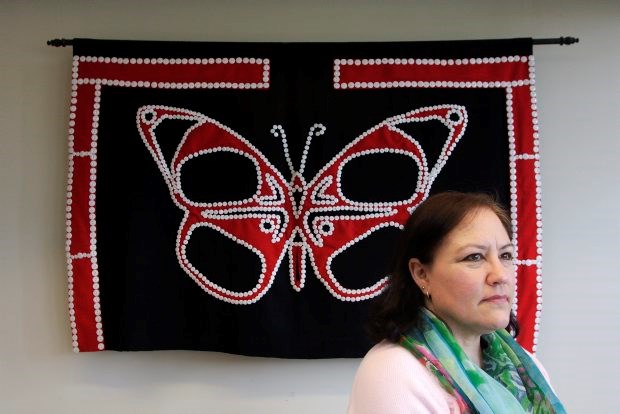EXHIBIT
Celebrating 40 Years of Urban Aboriginal Art
Where: Victoria Native Friendship Centre, 231 Regina Ave.
When: Thursday and Friday, 6 to 8 p.m.
The Victoria Native Friendship Centre opens its doors today and Friday to present a selection of pieces from its collection of nearly 300 artworks.
The collection serves a dual purpose for the community, said co-curator Peter Morin, who is also Tahltan curator-in-residence at Open Space.
"There aren't very many aboriginal art collections," and usually they belong to philanthropists," Morin said.
And those in museums often having what he calls a "silencing" effect, he says, because the names of the artists aren't printed next to the works, so they become artifacts, rather than art.
Art also has a role in community growth, he said.
"The Friendship Centre has a mandate of doing community development and community service. So a component of the community is art making."
The show is part of a series of temporary exhibitions hosted at the centre. The first, held in December, drew from the centre's multicultural collection and included works by First Nations artists from across the country.
This week's show focuses on Coast Salish artists and includes works by lessLIE, Susan Point and Carey Newman.
It is co-curated by Morin, Leslie Mcgarry, the centre's culture and community liaison, and Shona Collison, team leader of mental health.
Morin will talk about how urban aboriginal art influences the community, Mcgarry will talk about its educational elements and Collison will discuss its healing qualities.
Exhibitions planned for later in the year will feature Nuu Chah Nulth and Kwakwaka'wakw artists.
"We wanted to honour the three Island nations," Morin said.
Each exhibition features 14 works.
Many pieces of art arrive at the Native Friendship Centre as gifts - often from community members, in exchange for accessing one of the centre's many services.
Some arrive from outside the community, like the Ojibway art from Eastern Canada received through the annual meeting and gift exchange with other friendship centres across the country.
In other cases, the centre has purchased art.
"What others refer to as 'art,' we refer to as 'cultural property,' " Mcgarry said. "In 53 indigenous languages across Canada, there is no word for art. It's not perceived to be different from life."
Art plays a multifunctional role in the community.
"For some people, it's been a healing tool. For some people, it's helped them rediscover and reclaim their culture. Because of the residential schools ... and all these other things that have happened to First Nations people. A lot of artists have stories of rediscovery," she said.
"Some of the pieces are very powerful and I think that's why, because there's so much emotion attached to them."
Following the three upcoming exhibitions, the centre hopes to create a catalogue of its works.
"There's these really interesting stories that, if collected properly, would be a record of the community," Morin said, pointing to the story of a man who donated a piece in exchange for addiction services.
He said giving local aboriginal artists more visibility is a work in progress.
"People still say to me, we don't know aboriginal artists. I say here's 75 artists for you to look at. So it's a slow process," he said.
"By doing this work to acknowledge aboriginal artistic process, we're acknowledging and changing the effect of colonization."
Mcgarry said part of the show's purpose is to thank the artists who created the pieces.
"We don't want the artists to think that we've got all these pieces and we're not honouring them," she said.
"We want to let them know we haven't forgotten."



